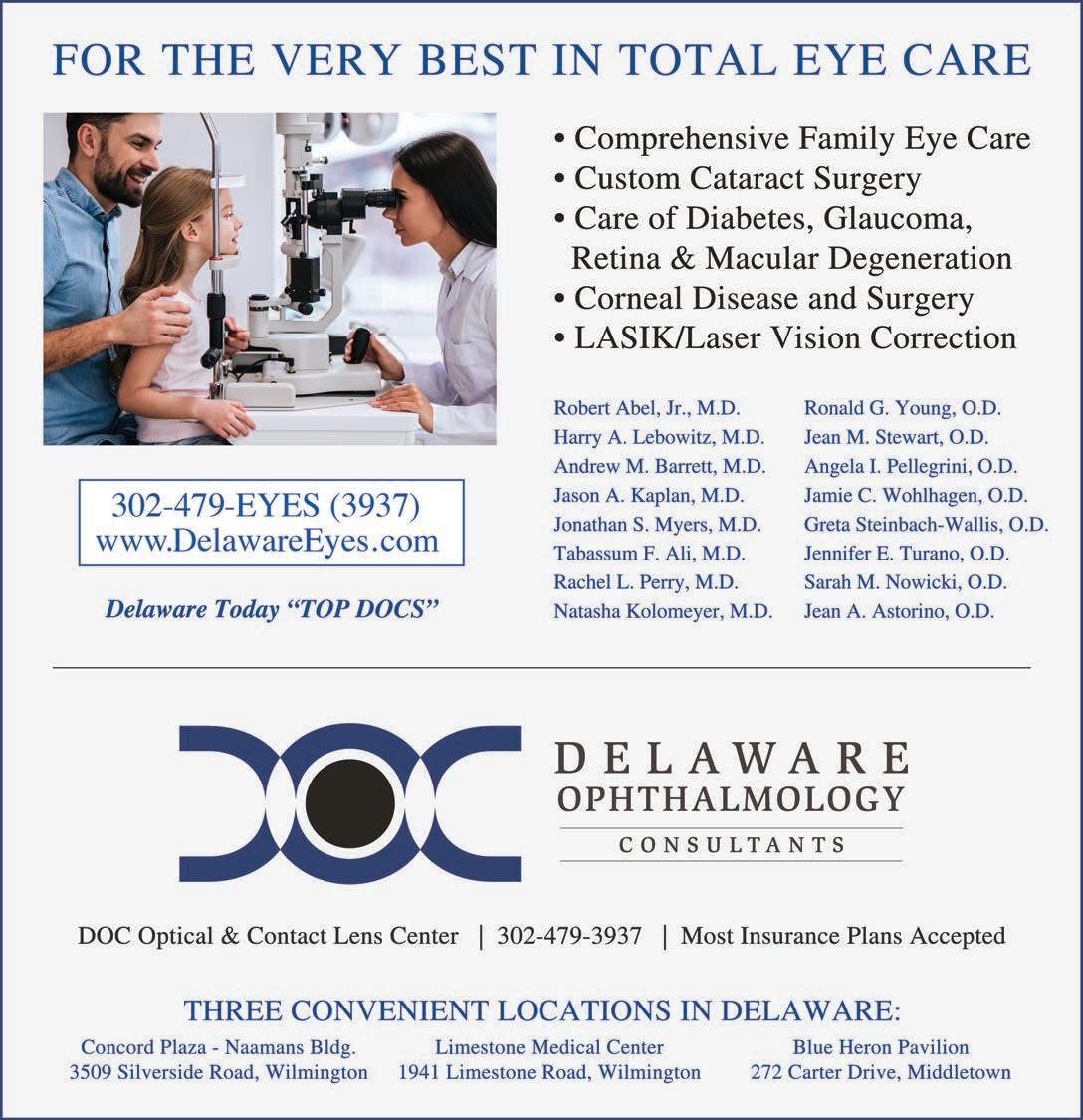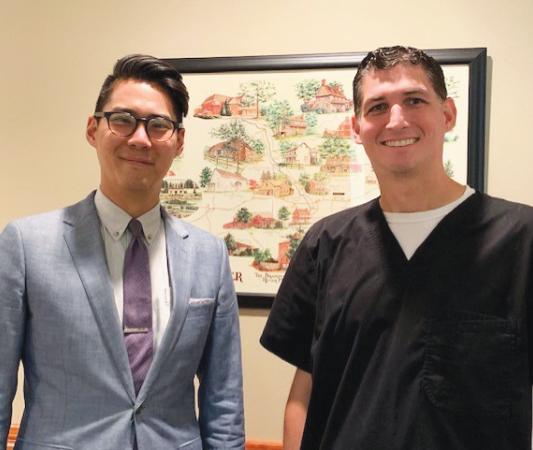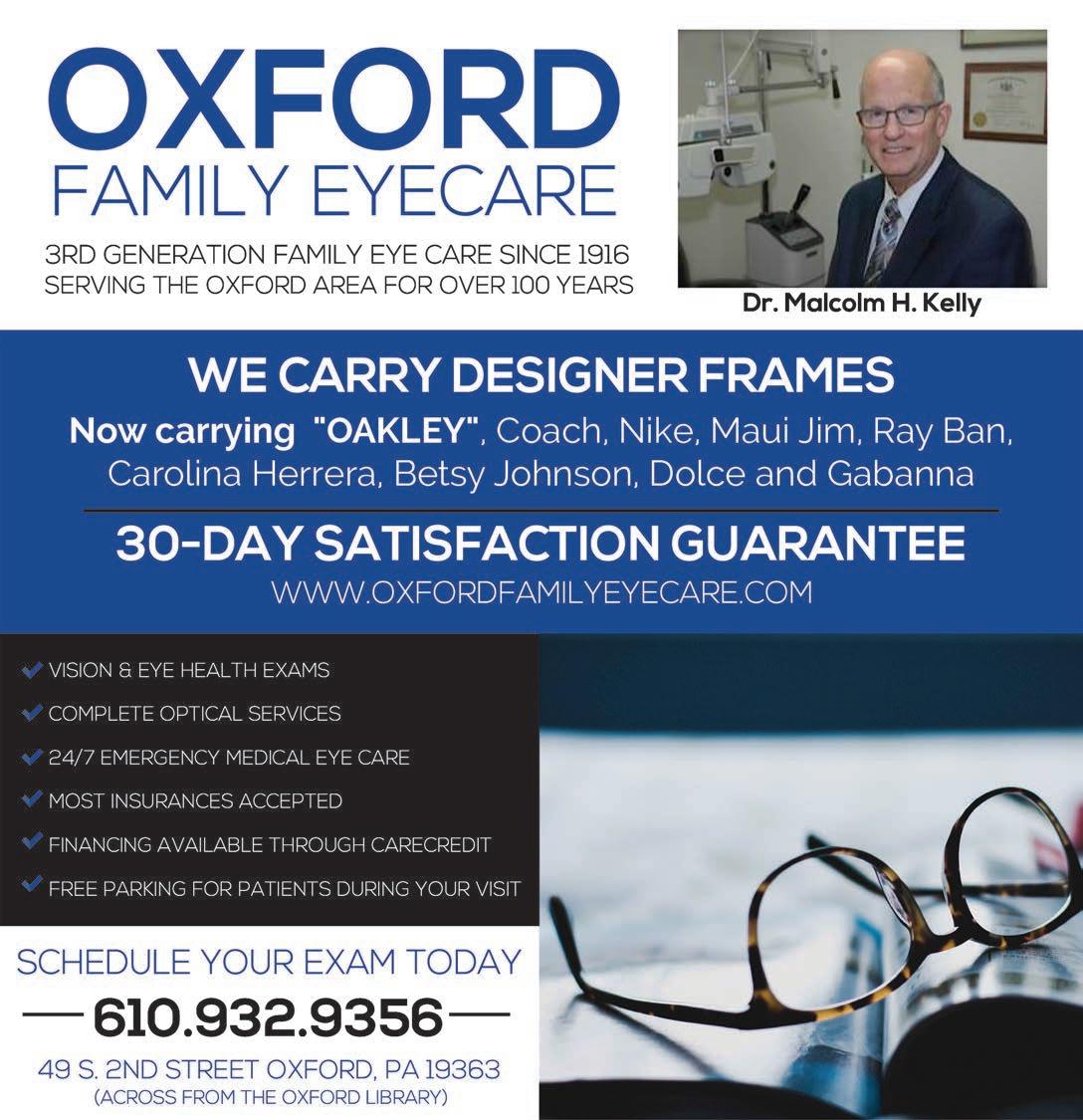
19 minute read
Jenny Chen Family Dentistry ......................... Dentistry
Jenny Chen Pediatric and Family Dentistry
Tired of not having any teeth? We have the solution!
HABLAMOS ESPAÑOL
JENNY CHEN DMD, PHD UNIVERSITY OF PENNSYLVANIA
MICHAEL LEMPER DMD UNIVERSITY OF PENNSYLVANIA AHMAD CHARKAS DMD UNIVERSITY OF ILLINOIS
FREE CONSULTATION FOR BRACES
“Anxiety Free Dental Care for Children and Adults” FULL ORTHODONTIC TREATMENT
WINTER SPECIAL FREE CONSULT AND XRAYS FOR IMPLANTS $165 VALUE FREE EMERGENCY VISIT FOR NEW PATIENTS
HOURS Mon, Tues, Wed: 9am to 5pm Friday: 8am to 3pm, Saturday: 8am to 12:30pm
jennyc499@gmail.com We take all insurance including MEDICAID
207 North Guernsey Road West Grove, PA. 19390 Tel: 610-869-0991 www.smilesinpa.com
We can fill out school forms for children.
Take your Legs to New Levels
No one likes leg day at the gym. For many reasons, however, you should be focusing on working your leg muscles while you’re working out.
A strong lower body can help to prevent injury and manage chronic conditions such as arthritis and diabetes. Stronger legs can make your cardio workouts easier to complete, as well.
Toned leg muscles keep your body balanced, so don’t forget to consistently work on your glutes, quads and hamstrings. Once you appreciate that your legs contain your largest and most important muscles, you can start incorporating funto-do exercises that will result in big-time benefits to your overall health.
Here are some of the greatest benefits of leg workouts, according to a recent report by Healthline. • Build muscle. • Tone and sculpt legs. • Strengthen core muscles. • Burn calories and promote weight loss. • Improve overall fitness. • Reduce joint pain. • Strengthen bones. • Engage major muscle groups. • Alleviate lower back pain. • Boost cognitive function. • Create an aligned, balanced and symmetrical body. • Improve mobility, stability and range of motion. • Manage stress. • Improve posture.
Read on for a couple of the most effective leg exercises, and remember to always practice safety in the weight room or at home. Squats One of the best leg exercises you can do is the squat. When performing a squat, try to
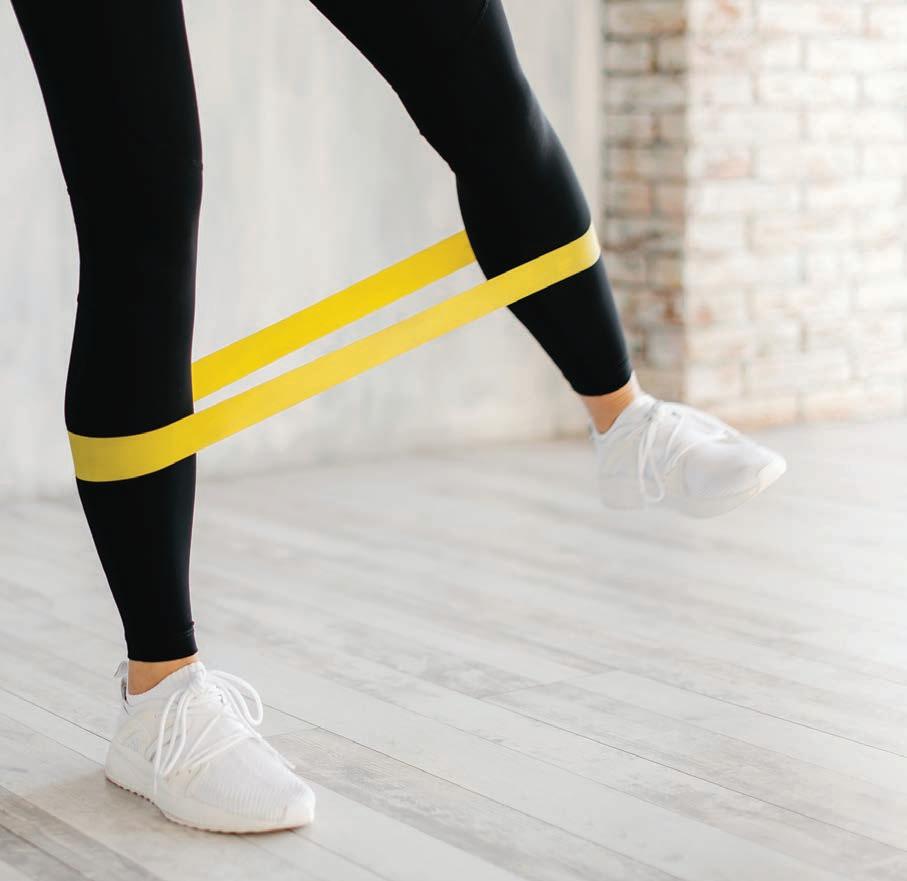
squat straight up and down to focus the most on using your quadriceps to get maximum results. You can do squats with a barbell, dumbbells or just your body weight.
Start at a lower weight until you have the form down, and then move up to get more results.
Once you master the squat, try jumping squats. Stand with your feet shoulder width apart and lower into a squat position until your thighs are parallel to the floor. Then, jump up as high as you can and try to land softly to avoid injury. Repeat this for at least 12 reps and do at least three sets, taking a 30-second break between sets.
Leg Press The leg press is highly effective in working your quads, glutes and hamstrings. Make it a staple of your weekly workout to see big results in your lower body.
Find the press machine at your local gym and start by setting the weight low. Sit down and press your feet squarely on the footplate, making sure your lower back stays pressed against the bench pad.
Release the safety and bend your knees to lower the platform. In a steady motion, push the platform back up to the top without locking your knees. Repeat for 12 reps and three sets, taking breaks if needed.
Always remember to exercise caution when you are working out. Without proper form, you can risk injury and may not be getting the most out of your workouts. Seek out a local personal trainer who can help you put together a structured, safe workout plan.
WELCOME TO JENNERSVILLE HOSPITAL
Convenient, Quality Care, Close to Home.
Jennersville Hospitalprovides families in Southern Chester County expert care from board certified physicians and surgeons. No matter when you need us, we are here for you. Advancing Health. Transforming Lives.
How to Control Asthma
Unless you have personally suffered from asthma, you may not understand its severe impact on people.
Asthma is a disease that affects your lungs and is one of the most common longterm diseases of children. Adults can also have asthma, which causes wheezing, breathlessness, chest tightness and coughing.
Dealing with asthma can be a struggle, but there are some things you can do to keep your attacks under control.
Asthma By the Numbers
First, let’s understand the broad impact of asthma on Americans. Here are some common asthma-related statistics from the Asthma and Allergy Foundation of America: • According to the Centers for Disease Control and Prevention (CDC), 1 in 13 people have asthma. • More than 25 million Americans have asthma. This is 7.7% of adults and 8.4% of children. Asthma has been increasing since the early 1980s in all age, sex and racial groups. • Asthma is more common in adult women than adult men. • African-Americans in the U.S. die from asthma at a higher rate than people of other races or ethnicities. • More than 11.4 million people with asthma, including more than 3 million children, report having had one or more asthma episodes or attacks. • Asthma is the leading chronic disease in children. • Asthma is more common in children than adults. • Asthma is more common in boys than girls. • Currently, there are about 6.2 million children under the age of 18 with asthma.
What Is an Asthma Attack? An asthma attack may include a sudden onset of coughing, chest tightness, wheezing and difficulties breathing.
During an asthma attack, your airways become inflamed, narrow and swell, and produce extra mucus, which makes it difficult to breathe.

How to Control Your Asthma
Prevention is the best tool for keeping your asthma at bay. By knowing the warning signs of an asthma attack, you can greatly improve your chances of managing an attack.
Some things to remember: • Always take your medicine exactly as your doctor tells you, even if you feel fine. • Stay away from things that can trigger an attack to control your asthma. • Limit exposure to smoke. • Visit your doctor if your medicine isn’t working or appears to become less effective. • Get a flu shot every year to prevent illness that can worsen asthma.

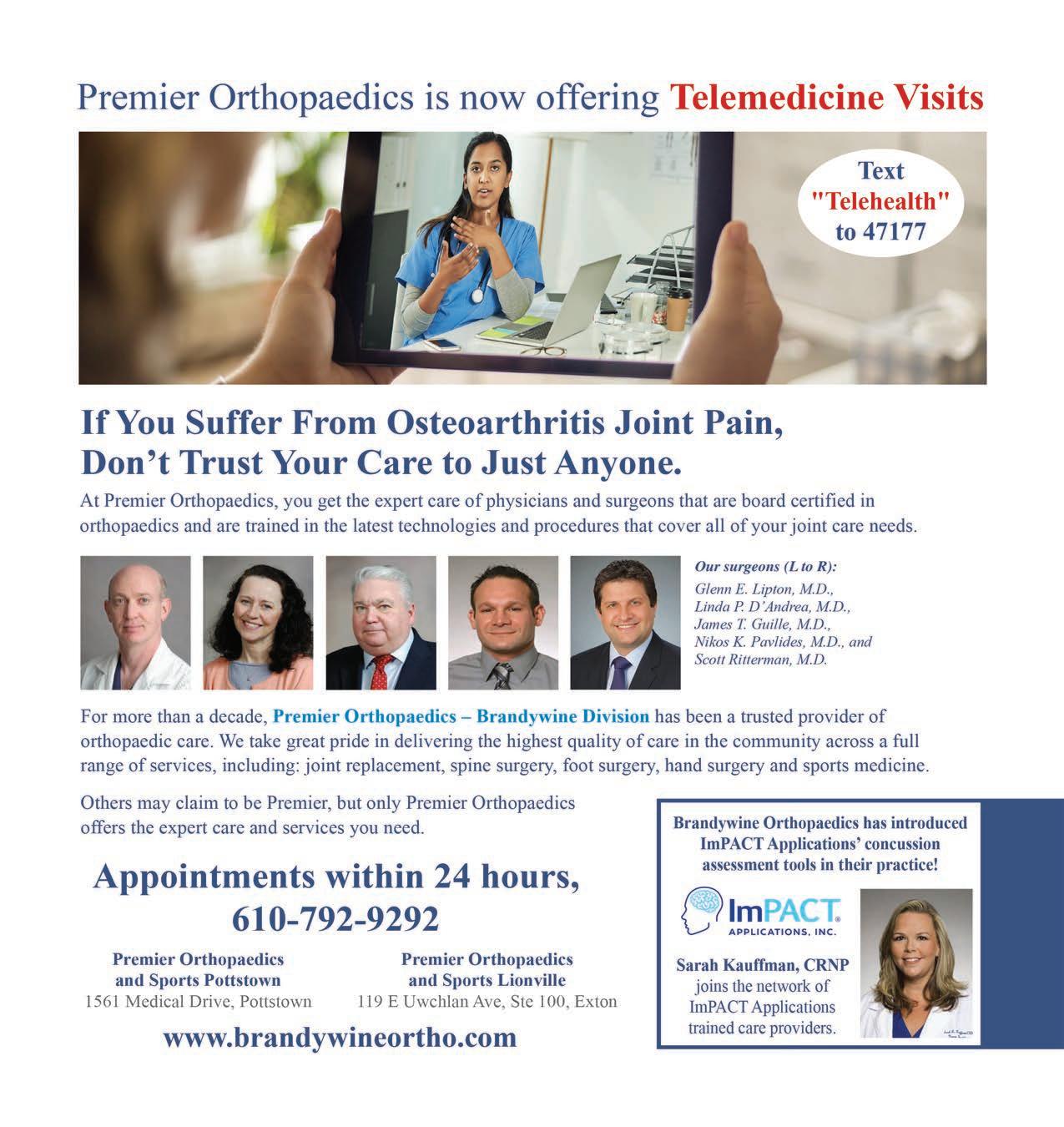
When things aren’t going your way, it’s easy to shut yourself off from the world and assume everything will
Think Positive

get worse. Practicing positive thinking can remove the invisible rain cloud and let in the sunshine.
An encouraging report from John Hopkins Medicine says that people with a family history of heart disease who also had a positive outlook were one-third less likely to have a heart attack within five to 25 years than those with a negative outlook.
If you feel like your attempts at overcoming depression or anxiety are falling short, it’s
crucial to visit a doctor. They can determine the complexity of the issue and strategize a solution or refer you to an expert who excels in mental health. Here are some ways a positive outlook can improve your life.
Improved Relationships
Once you begin working on changing your perspective to include positive thinking, you should analyze the types of people you associate with. Of course, your improved attitude will attract those with a similar mindset and help you flourish with new relationships. So, how do you manage friendships with those who may challenge your happier lifestyle?
While it may be tough to completely cut people out of your life, you can try to influence their attitude by showing them compassion and explaining the difference you feel through positive thinking.
Rewarding Yourself
When you begin improving the way your mind works, be sure to congratulate yourself with small rewards. Take account of negative situations and how positive thinking changes the outcome you may have created previously. Little treats like a cheat meal while dieting or buying yourself satisfying items from your rainy day fund are great ways to keep positive thinking at the forefront of your mind.
Work Performance
Another benefit you will experience by changing your perspective is a heightened performance at work. When your mind is clear from negative thoughts, you are free to problem solve and brainstorm without distractions.
ADVANCING
WOUND CARE
Wound Healing & Hyperbaric Medicine at Jennersville Hospital offers comprehensive treatments to heal difficult wounds. Our clinical team, lead by our vascular surgeon, will determine the underlying cause of your chronic wound and create a custom healing plan. For more information, call: (610) 869-1533
We treat all wounds associated with, but not limited to:
DIABETIC FOOT ULCERS • VENOUS INSUFFICIENCY • PRESSURE ULCERS • SURGICAL WOUNDS TRAUMATIC WOUNDS • ARTERIAL ULCERS • RADIATION DELAYED EFFECTS COMPROMISED SKIN GRAFTS AND FLAPS • CRUSH INJURIES • SOFT TISSUE RADIONECROSIS Hyperbaric Oxygen Therapy (HBO) utilizes 100 percent oxygen to provide a temporary extra high level in tissue and encourage the body’s natural wound healing mechanisms, which are oxygen dependent.

What Is Structural Heart Disease?
Your heart is similar to a sophisticated building. While the rooms and passageways of a building provide safety for its occupants, those within your heart keep your blood flowing in and out properly — all in order to ensure your health and well-being.
Also like a building, structural problems can lead to issues down the road, especially if they’re not properly treated and cared for.
“Structural heart disease is a form of heart disease that refers to defects within your heart that you were either born with or have developed due to aging, injury, or infection. Similar to other kinds of heart disease, it can lead to health problems if left untreated. However, unlike other types, it usually has nothing to do with eating, exercising, smoking, or other lifestyle choices,” says Muhammad Raza, MD, interventional cardiologist at the Heart Valve Center and Director of the Penn Medicine Structural Heart Disease Program at Chester County Hospital.
There are many types of structural heart disease.
One of the most common forms of structural heart disease is valvular heart disease, which is when a heart valve is damaged or doesn’t work properly. There are also other types, such as when a baby is born with a hole in their heart, called an atrial septal defect.
The structure of your heart is elaborate, and abnormalities can be dangerous for your health. Here’s what you should know about this essential organ — and what problems can occur.
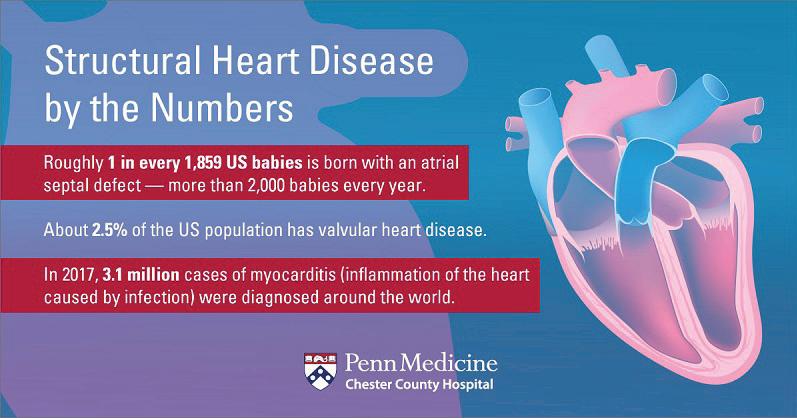
Heart Basics: The Role and Structure of an Essential Organ
The role of your heart is undeniably critical. By pumping blood throughout your body, your cells are able to get the blood, oxygen, and nutrients they need to survive.
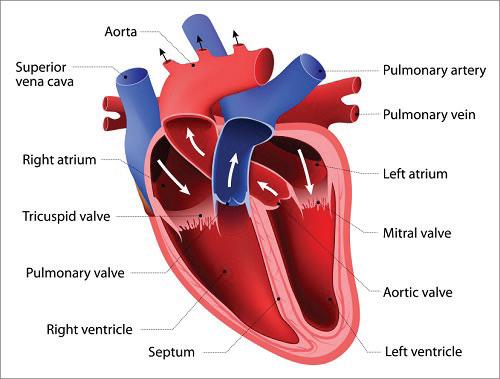
“This vital organ is made up of two major components — chambers and valves. The chambers are like rooms within your heart, while the valves are similar to doors that separate those rooms,” says Dr. Raza.
Heart Chambers
In a normal heart, there are two sides (right and left) and four chambers (upper and lower). The upper chambers, which are referred to as the right atrium and left atrium, collect blood that comes from the body or the lungs.
The lower chambers, which are called ventricles, receive blood from the atria and pump it out to the rest of the body. The right ventricle sends blood to the lungs, and the left ventricle sends blood to the rest of the body.
Heart Valves
“Both the direction and timing of how the blood is pumped are vital to the proper functioning of your heart, and this is where heart valves come in. In order to empty blood from each chamber and keep it moving forward, valves must close and open correctly and in the right order,” says Dr. Raza.
Abnormalities within these chambers or valves can make it difficult for your heart to do its job effectively — and they may be a sign of structural heart disease.
Types of Structural Heart Disease
The complexity of the heart means there are a variety of possible types of structural heart disease. Here are some of the most common forms.
Heart Valve Disease
When your heart valves don’t work properly, blood doesn’t flow in and out of your heart as it should. Types of heart valve disease include:
Regurgitation, which is when blood leaks back through a valve in the wrong direction. One common leaky valve in the heart is Mitral valve prolapse/regurgitation, which is when the mitral valve (which separates the top left chamber from the bottom left chamber) doesn’t close tightly enough.
Stenosis, which is when a valve doesn’t open enough, blocking blood flow. The aortic valve, which is similar to the main door of a house and the last valve in the heart blood has to pass through to the body, is the most common to have stenosis leading to decreased blood flow to the entire body. This in turn leads to shortness of breath or chest discomfort.
You can be born with heart valve disease or it can be caused by infection, heart attack, heart disease, or heart damage. Some valve problems are minor and only require periodic surveillance with echocardiograms. However, more advanced valve disease is a mechanical problem and usually requires replacement or repair through minimally invasive procedures, such as transcatheter aortic valve replacement (TAVR).
“This procedure is performed under conscious sedation through a very small incision in the groin, and patients go home in 24 to 48 hours later with a new valve in the heart,” adds Dr. Raza.
Do you have questions about structural heart disease? Call 610-738-2660 to speak with a clinician at The Heart Valve Center at Chester County Hospital. Congenital Heart Disease (Atrial Septal Defect)
As a baby develops during pregnancy, there are several openings between the chambers of the heart which, as the baby grows, close off. One of these openings divide the upper chambers of the heart and usually close towards the end of pregnancy or shortly after the baby is born.
Sometimes, this stays open, leaving a hole called an atrial septal defect. Though the cause is largely unknown, it may be due to genetics or food, drink, or medicine the mother ingests during pregnancy.
“Treatment for atrial septal defect depends on the size of the hole and severity of symptoms in adult life. It may require monitoring and medication to treat symptoms, or usually a minimally invasive transcatheter repair/closure or rarely surgery,” Dr. Raza says.
The Importance of Caring for Your Heart
Your heart works hard to keep you healthy — and it’s important to do everything you can in order to support it, including monitoring for potential problems.
While the structure of your heart may not be completely in your control, living a heart-healthy lifestyle is. Eating healthy, staying active, and not smoking all ensure your heart is as strong as it can be. That, along with maintaining routine medical check-ups, helps set your heart up for success — for now, and for many years down the road.
Members of the Structural Heart Disease program at Chester County Hospital include (L to R) Deon Vigilance, MD; Muhammad Raza, MD; and Steven Weiss, MD.

Get Moving: Find your Sport

Senior exercise programs can incorporate multiple physical activities, including sports both competitive and non-competitive. If you’re looking for a new way to work out while also getting all of the benefits of sporting activities, check out our list of possible options below.
As always, be sure to check with your physician or workout coach before starting a new sport.
Swimming Swimming gives the body a complete workout, helping improve both your muscular and cardiovascular systems. Water gives resistance to your workout routine, which makes you burn more calories and create more muscle mass.
In terms of the cardio benefits, your body is forced to work harder in the water to pump oxygen. This leads to a better workout for your heart and lungs. One of the other main benefits of swimming is you can do it in groups. Doing so lets you meet new people and improve your social life. There are likely competitive and recreational senior swimming classes at your local gym, so check with their fitness staff today.
Cycling
Do you enjoy cycling as exercise? If so, then you’re not alone. A 2015 report by the group Active Network found that baby boomers (seniors ages 55 and up) represent the fastest growing demographic when it comes to total number of cycling event registrations in the United States.
And for good reason. According to the AHA, cycling just 20 miles a week can reduce the risk of heart disease by 50%. And the cycling advocacy organization Cycle Nation has determined that an adult cyclist typically has a level of fitness equivalent to someone 10 years younger.
Look into your local cycling opportunities by checking in with your tourism board or parks and recreation leagues. You may just find a new sport that is easy on the joints and great for your body.
Golf If you’re looking for one of the most cardio-friendly activities, you may find that golf is the perfect sport for you. Especially if you choose to walk the course versus driving a cart, you can stack up some major steps while playing a round of golf. The sport gets you out in the fresh air and can also challenge your mind. There are different clubs for different shots and distances, requiring you to think creatively and understand your own swing.
Played with friends, golf can be a great way to socialize and meet new people, as well. The beauty of golf is its accessibility. There are likely a handful of courses in your area to choose from, so start swinging today.
Motivation for Better Health
If you have been feeling down lately, the key to getting out of the slump may be health related. According to the Harvard Medical School, one in 10 adults in the United States struggle with depression. Research shows that exercise is an effective way to treat the condition and can even work as well or better than antidepressants.
Common symptoms of depression include reduced energy, appetite changes and increased pain perception.
So, how do you find the motivation to get into a new routine and change your mental mindset? Experts at Harvard suggest starting slowly to get your body used to being active before increasing your level of physical activity.
Here is some motivation to get started and keep the momentum going, there is a happier version of you waiting to get active.
How Does Exercise Improve Moods?
Physical activity is an important contributor to positive mental health. The JED Foundation, an emotional health nonprofit for teens and young adults, offers these benefits of becoming active. • Improves mood and mental health by releasing endorphins through your body to reduce anxiety and depressed moods while enhancing self-esteem. • Boosts energy and brainpower by delivering oxygen and nutrients to the brain and various tissues. • Prevents illnesses like high blood pressure, strokes and heart disease. • Improves your quality of sleep and helps you fall asleep faster.
Clean Diet
Along with an active lifestyle, taking your diet seriously can provide you with a more positive mindset. Experts at the International Society for Nutritional Psychiatry Research have found that a healthy diet protects us from risk factors associated with depression and anxiety.
By loading up with healthy nutrients, vitamins can become the protein-building blocks and neurotransmitters that transfer information and signals between various parts of the brain and body.
Gut health is another area that is growing in finding a relationship between food and moods. Increase the number of probiotics in your diet to maintain a healthy gut environment and decrease inflammation in the body, which ultimately affects our cognition. Foods rich with probiotics include sauerkraut, olives, pickles and coconut.

Improved Self-Perception
Taking control of your health also promotes more self-esteem by improving the perception you have of yourself. Overcome the obstacles of becoming active and maintaining a healthy diet by logging your journey with pictures or diary entries. Looking back on the process can keep you motivated once you see how far you have come.

Mental Health Concerns
While both men and woman are subject to mental health conditions, experts believe men are less likely to seek help. Suicide in America has been on a steady rise since 2000 and is the seventh leading cause of death for men.
Men who experience depression or another mental health disorder will show several different warning signs, including aggressive behavior, substance abuse, changes in appetite or trouble sleeping. If you find yourself experiencing these symptoms, it is time to seek help.
Expressing Your Feelings
If you are overcome with feelings of depression, it may seem easier to repress the feelings and attempt to deal with the situation on your own.
The experts at the National Institute of Mental Health say this leads many men down the dark road of abusing drugs or alcohol to cope with emotional issues. This behavior can lead to more severe conditions, including health problems, financial stress and ultimately suicide.
You can find relief by talking to your loved ones and doctor. Your doctor will be able to prescribe you important medication to help curb feelings of depression. He also might recommend a qualified therapist in your area.
Therapy sessions will give you the chance to be completely honest about your feelings in a non-judgmental setting. Through these sessions, your therapist can usually determine the cause of depression and create a plan to help you cope.
Severe Anxiety
Another common mental health disorder men experience is severe anxiety. Feeling anxious when facing high-stress situations is an issue everyone faces. However, when anxiety occurs without warning and does not fade, it can create distractions that interfere with daily activities.
Severe cases of anxiety often cause panic attacks. The NIH defines a panic attack as a feeling of intense fear that can include accelerated heart rate, trembling, shortness of breath and a feeling of impending doom.
This serious disorder can be treated through medicine, therapy and family support. Stress Management
Stress is different for everyone but is often a contributor in the development of mental health disorders. The next time you feel like the weight of the world is on your shoulders, practice these methods recommended by the National Alliance on Mental Illness: • Exercise daily; • Take time for yourself; • Practice good time management skills; and • Express your feelings with loved ones.


